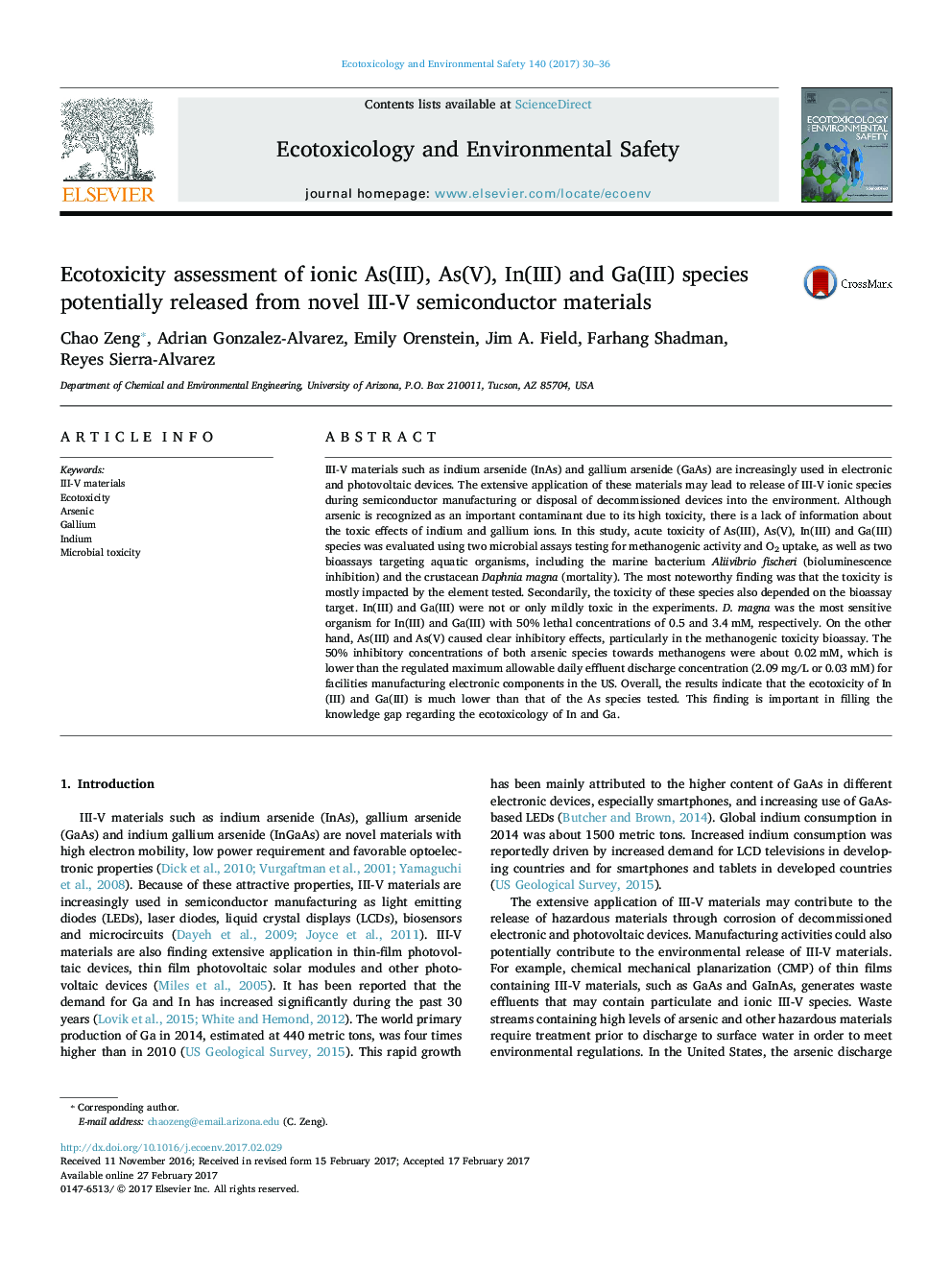| Article ID | Journal | Published Year | Pages | File Type |
|---|---|---|---|---|
| 5747668 | Ecotoxicology and Environmental Safety | 2017 | 7 Pages |
â¢As(III) and As(V) showed strong inhibitory effects in different bioassays.â¢The ecotoxicity of In(III) and Ga(III) is much lower than that of arsenic species.â¢Daphnia was the most sensitive organism to citrate complexed In(III) & Ga(III).â¢Without chelators, soluble In/Ga levels at pH 6-8 are much lower than IC50 values.
III-V materials such as indium arsenide (InAs) and gallium arsenide (GaAs) are increasingly used in electronic and photovoltaic devices. The extensive application of these materials may lead to release of III-V ionic species during semiconductor manufacturing or disposal of decommissioned devices into the environment. Although arsenic is recognized as an important contaminant due to its high toxicity, there is a lack of information about the toxic effects of indium and gallium ions. In this study, acute toxicity of As(III), As(V), In(III) and Ga(III) species was evaluated using two microbial assays testing for methanogenic activity and O2 uptake, as well as two bioassays targeting aquatic organisms, including the marine bacterium Aliivibrio fischeri (bioluminescence inhibition) and the crustacean Daphnia magna (mortality). The most noteworthy finding was that the toxicity is mostly impacted by the element tested. Secondarily, the toxicity of these species also depended on the bioassay target. In(III) and Ga(III) were not or only mildly toxic in the experiments. D. magna was the most sensitive organism for In(III) and Ga(III) with 50% lethal concentrations of 0.5 and 3.4Â mM, respectively. On the other hand, As(III) and As(V) caused clear inhibitory effects, particularly in the methanogenic toxicity bioassay. The 50% inhibitory concentrations of both arsenic species towards methanogens were about 0.02Â mM, which is lower than the regulated maximum allowable daily effluent discharge concentration (2.09Â mg/L or 0.03Â mM) for facilities manufacturing electronic components in the US. Overall, the results indicate that the ecotoxicity of In(III) and Ga(III) is much lower than that of the As species tested. This finding is important in filling the knowledge gap regarding the ecotoxicology of In and Ga.
